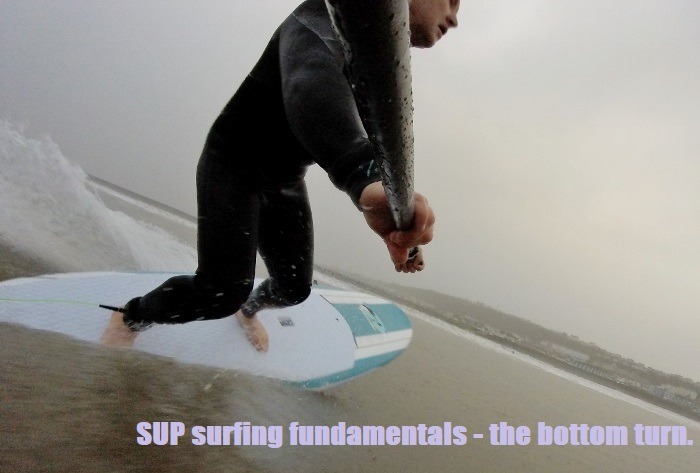SUP surfing, just as with traditional prone style surfing, requires fundamental building bock skills to unlock all that desired wave performance. Once riders have nailed down their paddling skills on flat water, progressed to catching small waves and can consistently ride down the line on unbroken faces it’s time to start carving.
SUP surfing fundamentals.
The bottom turn is possibly the most important fundamental skill a stand up paddle surfer can acquire. Assuming the rider’s positioning in the line up is correct, wave ‘reading’ is on point and the take off nailed then bottom turns are the next step.
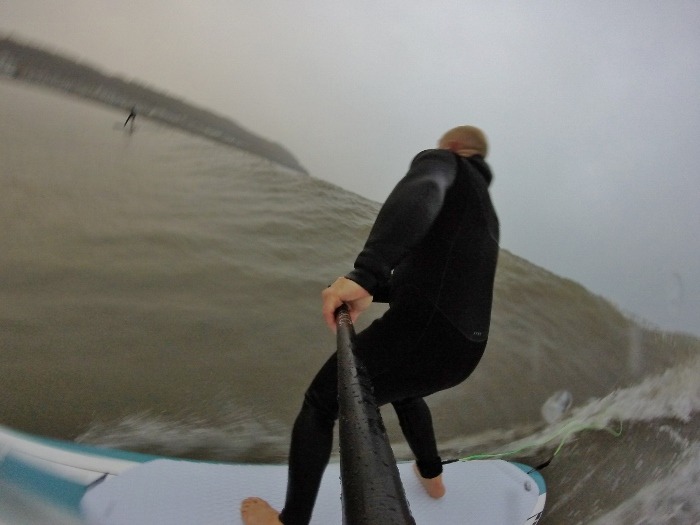
A solid, efficient bottom turn will set any SUP surfer (or surfer for that matter) for the remainder of the wave. It can help generate speed, by slingshotting paddlers back up the wave face. As well as help riders navigate sections and prepare for their chosen move. A good SUP surfing bottom turn really is a fundamental stand up paddle boarding skill that all SUPers need to stomp if waves are your thing.
The bottom turn.
Having picked up a solid, steep wave the rider should roll in and drop down the face picking up speed as he/she goes. Your head should be up – or more specifically looking down the line in direction of travel. This’ll be left or right depending on which way the wave’s breaking.
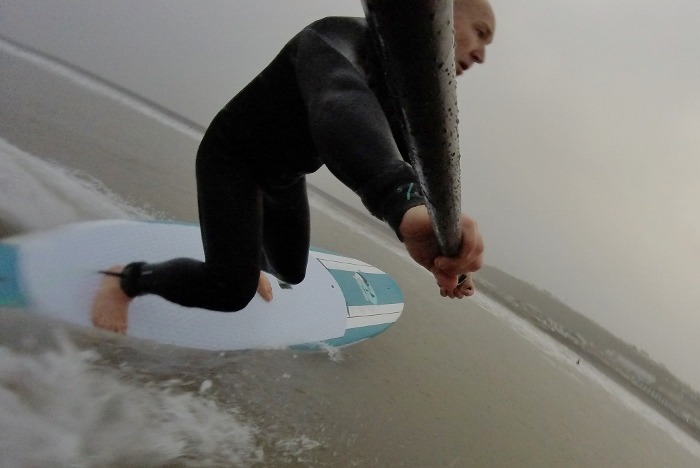
Proactivity on the board is key, resulting in accurate trim. Standing forwards during the drop will see maximum speed down to the trough. As the rider reaches the bottom he/she will have shifted their weight closer to the tail, and over to the relevant inside rail well in advance. If you don’t, and keep forwards then the board’s nose may bury. Depending how steep and fast travel is will determine how far back the paddler can step.
Keeping the head up, spotting the lip, and looking down the line continue to pressurize the inside rail closest to the wave face. Use your paddle here. Keep it high and use it to lean on slightly (brace). But be careful it doesn’t submerge and act as a rudder thereby slowing the ride down. As you accelerate off the bottom start to subtly unweight and shift back inboard, flattening your SUP slightly.
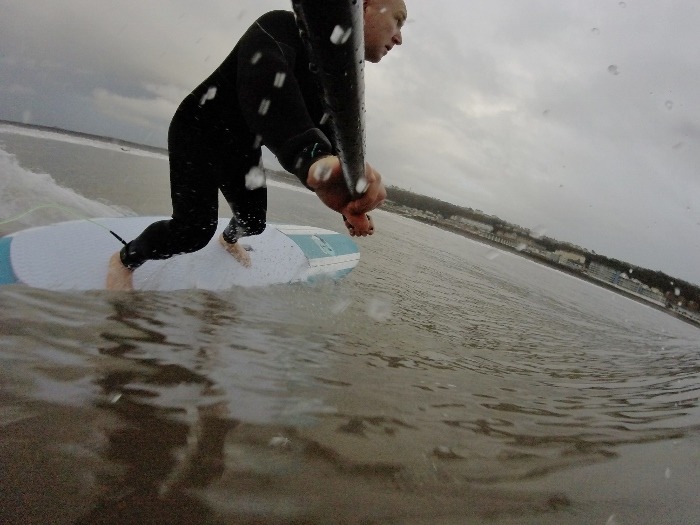
Timing and positioning.
If you’ve timed the above correctly then everything will be heading towards the wave’s lip or shoulder – depending what you’re trying to achieve.
At this point, you’ll have performed an effective and meaningful bottom turn that’ll give boundless opportunities for your next maneuver. You may simply be wanting to zoom along further until the wave steepens or bang one into the pitching lip. The choice is yours. But whatever you do a solid SUP surfing bottom turn will give options.
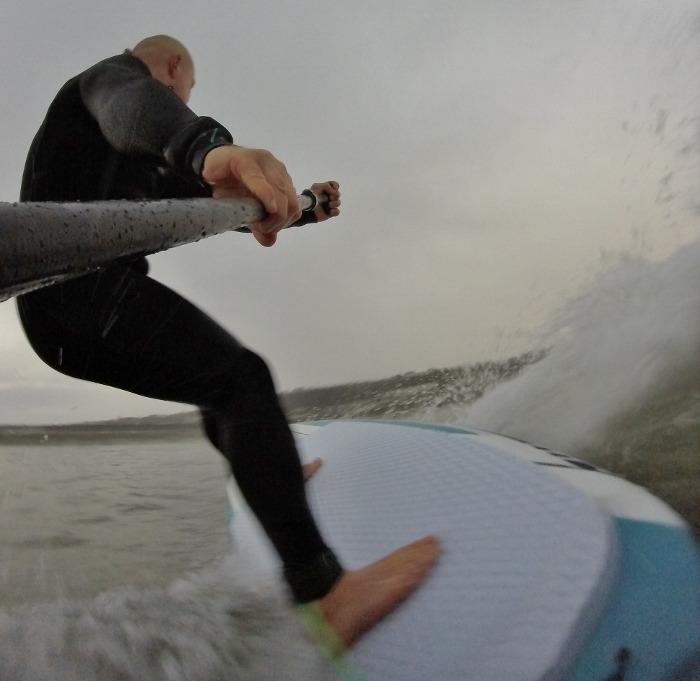
Practice the bottom turn until you’re happy. But don’t forget no two waves are ever the same so any move is a fluid and evolving action that gets better with time, perseverance, and experience.
For more SUP stoke and knowledge head over to the following.

